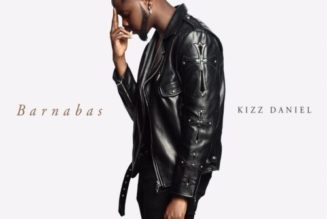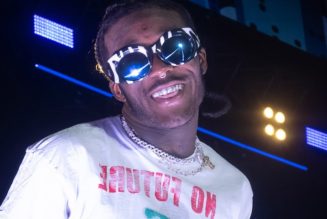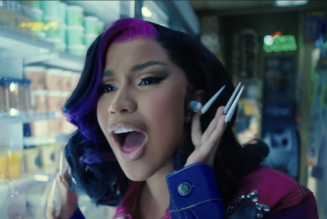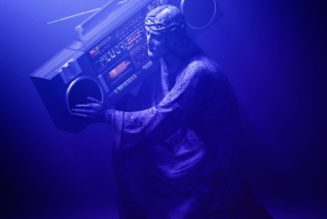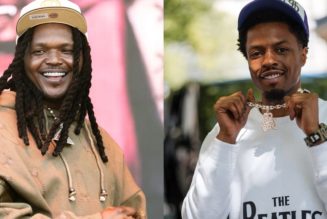
By Grant Sharples
No one knew James Blake could sing. Before his 2011 debut album, released 10 years ago today (February 4), the electronic songwriter-producer had primarily become known for his sample-driven, minimalist dubstep arrangements. Apart from a brief 20th-century spiritual singing clip, Blake’s 2009 debut single “Air & Lack Thereof” featured zero vocals, much like its counterpoint instrumental track, “Sparing the Horses.” Following up this single with a string of three acclaimed EPs, 2010’s The Bell Sketch, CMYK, and Klavierwerke, Blake further cemented himself in London’s electronic music scene. But it wasn’t until his self-titled, full-length debut that he became James Blake, the songwriter-vocalist, in addition to James Blake, the producer.
Its contemporary Pitchfork review forecasted that this collection of songs would “soon make Blake a star.” This statement couldn’t have been more prescient; in the past decade, Blake has become an unlikely celebrity. The quiet, precocious producer, only 22 years old at the time of the album’s release, would eventually go on to work with megastars such as Beyoncé, Kendrick Lamar, André 3000, Travis Scott, Anderson .Paak, and Vince Staples, and he’d even acquire a couple of features on Lamar’s curated soundtrack for the Marvel blockbuster Black Panther. Music aside, he’d begin dating actor Jameela Jamil, to whom he dedicated his fourth album, 2019’s Assume Form. Blake’s first album thrust him into the spotlight, and he continually gained even more attention with each new record.
Not only could Blake sing, but he could sing well. For an artist who had previously used his voice only as a sample, it was surprising to hear that he had impressive chops and prowess. His flourishes and inflections, spaced out across the album’s 11 tracks, placed him a grade above other English producers of his ilk. On top of that, it turned out he was also an excellent keyboard player. It’s as if his earlier recordings are suggestive artifacts of a different James Blake, one that mainly composes instrumental electronic tracks rather than full-fledged songs. His 2011 debut, in a strange way, was the first glimpse at who Blake truly was as an artist — one who played with pop structures and warped them to fit his own vision.
This pop-centric emphasis gave Blake the liberty to reimagine others’ work in his own style. His cover of Canadian indie-pop songwriter Feist’s “The Limit to Your Love” is an immediate standout. Where Feist’s version is built on light drums, piano, and backup harmonies, Blake takes the sparse piano lick and builds his own sonic setting. Replete with hushed, wobbling bass and reverberating, electronic percussion, it’s technically a cover, but it feels entirely like Blake’s own. His version is more of a complete reimagining than it is a faithful rendition.
“Limit” isn’t the only older song on this album that’s been repurposed. Blake’s father, James Litherland, is also a musician and a founding member of the prog-rock outfit Colosseum in the late 1960s. In 2006, Litherland released a guitar-led soft-rock jam called “Where to Turn,” which Blake pays homage to on his album by flipping it into a new creation. Known as “The Wilhelm Scream,” Blake restructures his father’s song, using a handful of stanzas and building something new out of them. Gone are the guitars, acoustic drums, and piano; they’re replaced with ambient pads, arpeggiated synthesizers, and a drum machine. Litherland’s version follows a traditional song structure, but his son creates something more akin to a loop that builds on itself ever so gradually, almost imperceptibly.
These two covers show that Blake doesn’t care to mimic others’ styles, but rather adapt them to his own to reinforce his own creative approach. They even foreshadowed his covers that would become notably popular later in his career, such as his version of Frank Ocean’s “Godspeed” that rose to ascendancy on TikTok. “The Wilhelm Scream” and “Limit to Your Love” helped move Blake away from the sample-heavy dubstep his EPs were laden with; they helped strengthen his artistic identity as a minimalist indie-pop songwriter-producer.
His self-titled album is also the point where he identified himself as a deceptively talented lyricist. “I Never Learnt to Share” is built on just a handful of lines, but they’re all the more poignant as they burrow deeper with each repetition. “My brother and my sister don’t speak to me,” Blake sings with his signature vibrato, “but I don’t blame them.” He adds layer upon layer as the track progresses, building emotionality, even as he would late admit it’s “sort of an in-joke” to his life as an only child. Opener “Unluck,” which also consists of just a couple of stanzas, dives further in, describing his isolation as an only child (“Only child, take good care / I wouldn’t like you playing, falling there”). Blake takes a minimalist approach to his lyrics, just as he does with his music, yet each track is imbued with melancholy, such as the lament of “To Care (Like You)” and the remorse in “Give Me My Month.” This sense of gloom would soon become a key trait in his music. This is the Blake that fans know now, and he arrived at the perfect moment.
In an interview with Clash magazine a few months after his debut album’s release, Blake talked about how The xx “warmed the seat” for him, and that the British indie-pop trio changed the way “people listen to that brand of sparse electronic music.” The explosion of The xx heralded Blake’s arrival to the scene that also saw the burgeoning popularity of similar artists like Oneohtrix Point Never and Mount Kimbie. Although The xx would subsequently abandon the minimalism with 2017’s I See You and producer Jamie xx’s solo effort In Colour, Blake expanded on his initial foundation. On his next two records, Overgrown and The Colour in Anything, he used the sonic palette first explored on his debut to branch off into untrodden, more ambitious territory. 2013’s Overgrown rings like a more elevated version of James Blake, while 2016’s The Colour in Anything is his most grandiose work yet, even featuring a cameo from his big-indie contemporary Bon Iver on “I Need a Forest Fire.” Some critics wrote off 2019’s Assume Form as self-indulgent, but this is the most sensible trajectory for Blake, as he has continually widened his artistic scope with each new record.
Without James Blake, the artist simply wouldn’t be the James Blake as he’s currently known. Maybe he would have gone on to continue making sample-based instrumental tracks. Maybe he would have been an underground collaborator or ghostwriter instead of an artist in his own right. He’s worked with household names several times, but never at the expense of his own work or identity. Blake remains in the spotlight himself, something he made sure to clinch on the album’s closer, “Measurements.” “Testing sounds for the deaf and the forest cold,” he sings, doubling his voice until there’s an entire choir. But they’re all him.


